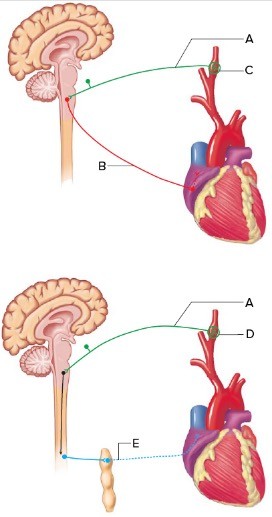 The figure illustrates the autonomic reflexes and the heart. What does "D" represent?
The figure illustrates the autonomic reflexes and the heart. What does "D" represent?
A. Vagus nerve
B. Decrease in blood pressure detected by carotid baroreceptors
C. Glossopharyngeal nerve
D. Increase in blood pressure detected by carotid baroreceptors
E. Sympathetic nerve
Answer: B
You might also like to view...
A person with a head injury has sustained damage to the pineal gland. What affect will the damage to this gland have on the person?
A) Alterated sleep regulation B) Increased blood glucose level C) Lower blood glucose level D) Lower level of blood calcium
Ceroid pigments and lipofuscin accumulate with aging, impairing a cell's ability to
withstand the damaging effects of oxygen free radicals. Indicate whether the statement is true or false
The center cavity of the diaphysis of a long bone is called the ________.
A. nutrient foramen B. marrow cavity C. canaliculus D. central canal E. epiphysis
Longer stimuli will allow for _______.
A) the absolute refractory period to finish B) more action potentials to occur C) the relative refractory period to finish D) more action potentials to occur, the absolute refractory period to finish and the relative refractory period to finish